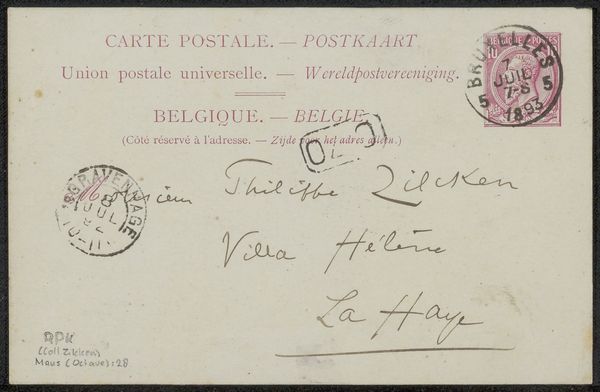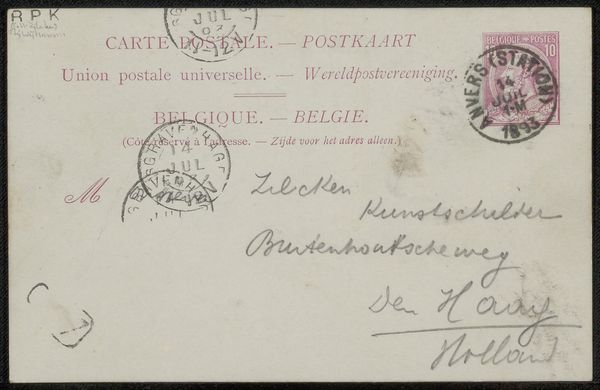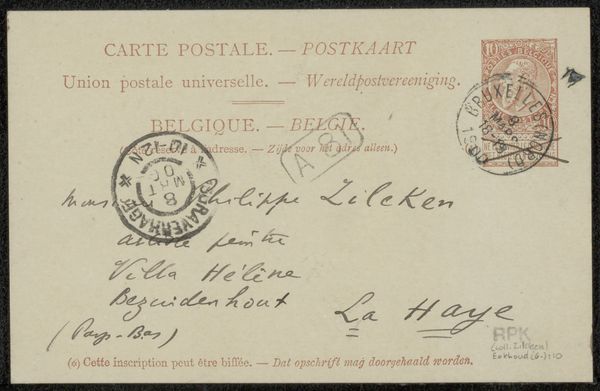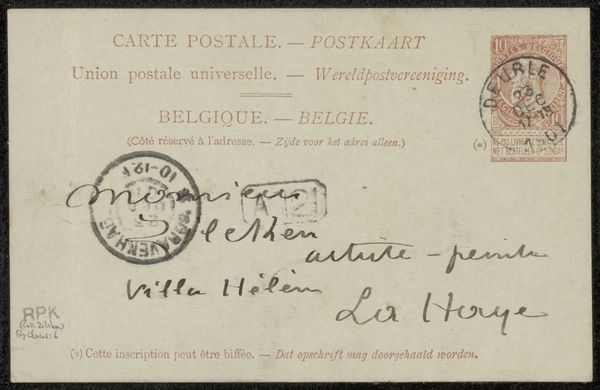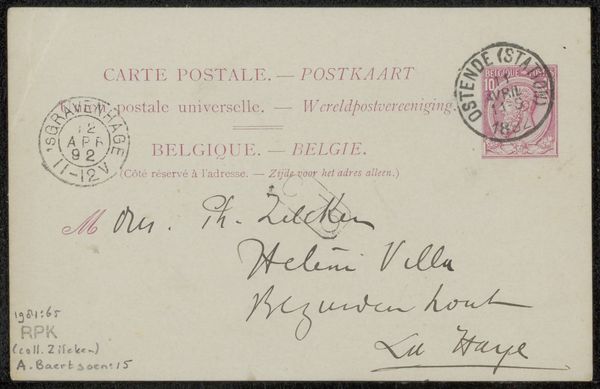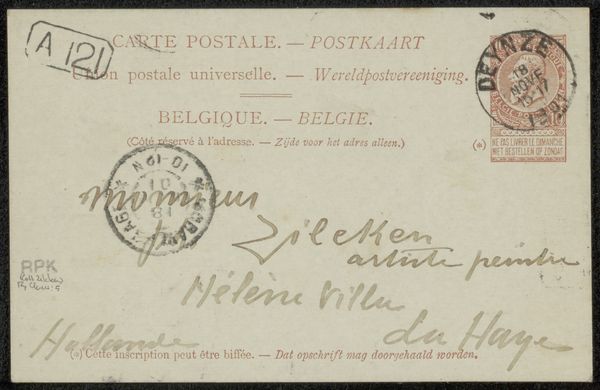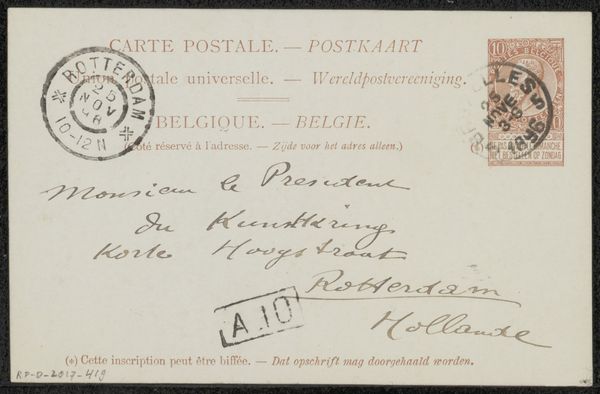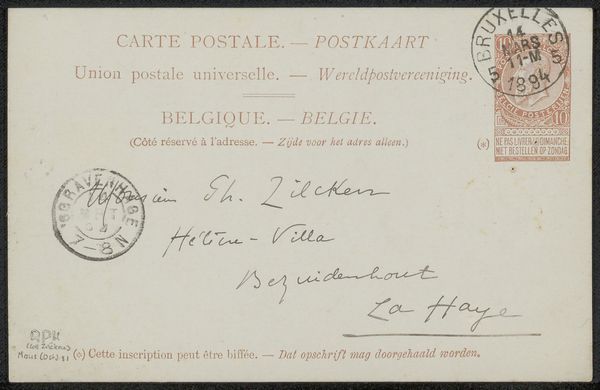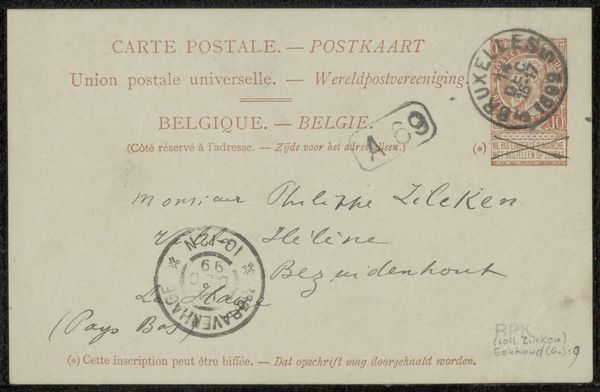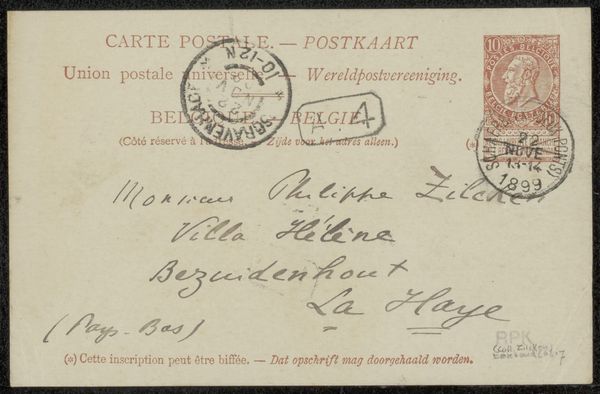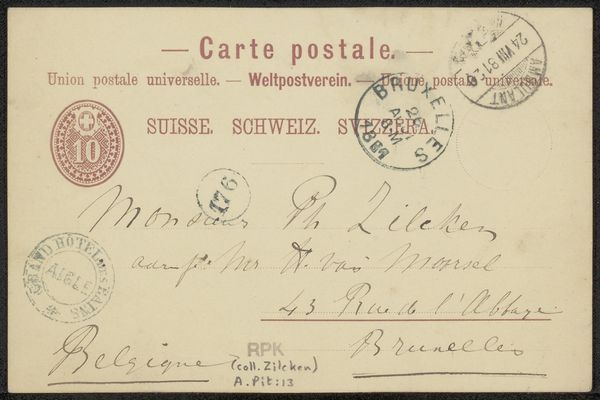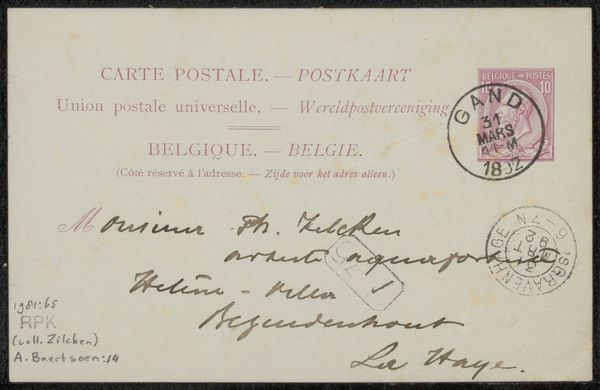
#
pen sketch
#
hand drawn type
#
personal sketchbook
#
idea generation sketch
#
ink drawing experimentation
#
pen-ink sketch
#
ink colored
#
pen work
#
sketchbook drawing
#
sketchbook art
Copyright: Rijks Museum: Open Domain
Curator: Octave Maus’s "Briefkaart aan Philip Zilcken," dating from before 1897, presents us with more than just a message—it's a fragment of a conversation frozen in time. It's composed primarily of ink on paper. My immediate reaction is of something ephemeral, a whisper across years. Editor: Ephemeral is right. It feels strangely intimate to be peering at someone's old mail. You can almost smell the dust of history. From a material perspective, this work intrigues me. The postcard itself – mass produced yet then singularized with handwritten ink. What does it say about art’s democratizing tendencies during the 19th century? Curator: Oh, I love that you bring up the mass-produced postcard and the individual mark. It underscores a beautiful tension. This was intended for a very specific reader, Mr. Zilcken. Notice the looping cursive, the care with which the address is written. It transcends the utilitarian nature of a postcard. The cancellation mark is so vibrant and aged, layered in with the purple-tinted printed lettering of the card and handwriting to offer a unified effect that's rather nice! Editor: Exactly! Think about the infrastructures that this small object depends upon—postal systems, ink manufacture, paper production. And who had access? To me, this postcard gestures to class, literacy, the material networks enabling these interactions, these exchanges. Was Zilcken, I wonder, an artist or perhaps a patron of the arts? What relationship did he share with Maus, beyond the transactional postcard itself? Curator: We know Zilcken was a prominent collector, a patron of many Symbolist artists. It places this card squarely in the milieu of artistic exchange. Imagine it being pinned on a wall with other artworks, a casual nod between contemporaries. I get the sense of the early beginnings of a community, being made, piece by piece. I picture artistic connections slowly unfurling across a great distance of land. Editor: A community dependent on accessible transportation, on the ability to disseminate information, of course. Reflecting on that community, how does seeing art in this raw, undigitized state affect your sense of the aesthetic or historic art world in which the postcard was produced and consumed? Curator: I think viewing work from before 1900 provides an interesting counterweight. To see it removed from the hyper-saturation and access to media and data that the 21st century makes us privy to really speaks to the different modes through which social exchange and community may be fostered or generated. It is important to keep that in mind! Thanks for that insightful question. Editor: Of course. The materiality, the hand—it’s all whispering something to us about how these artworks functioned and how they can and will operate in today’s increasingly fast-paced market economies.
Comments
No comments
Be the first to comment and join the conversation on the ultimate creative platform.
